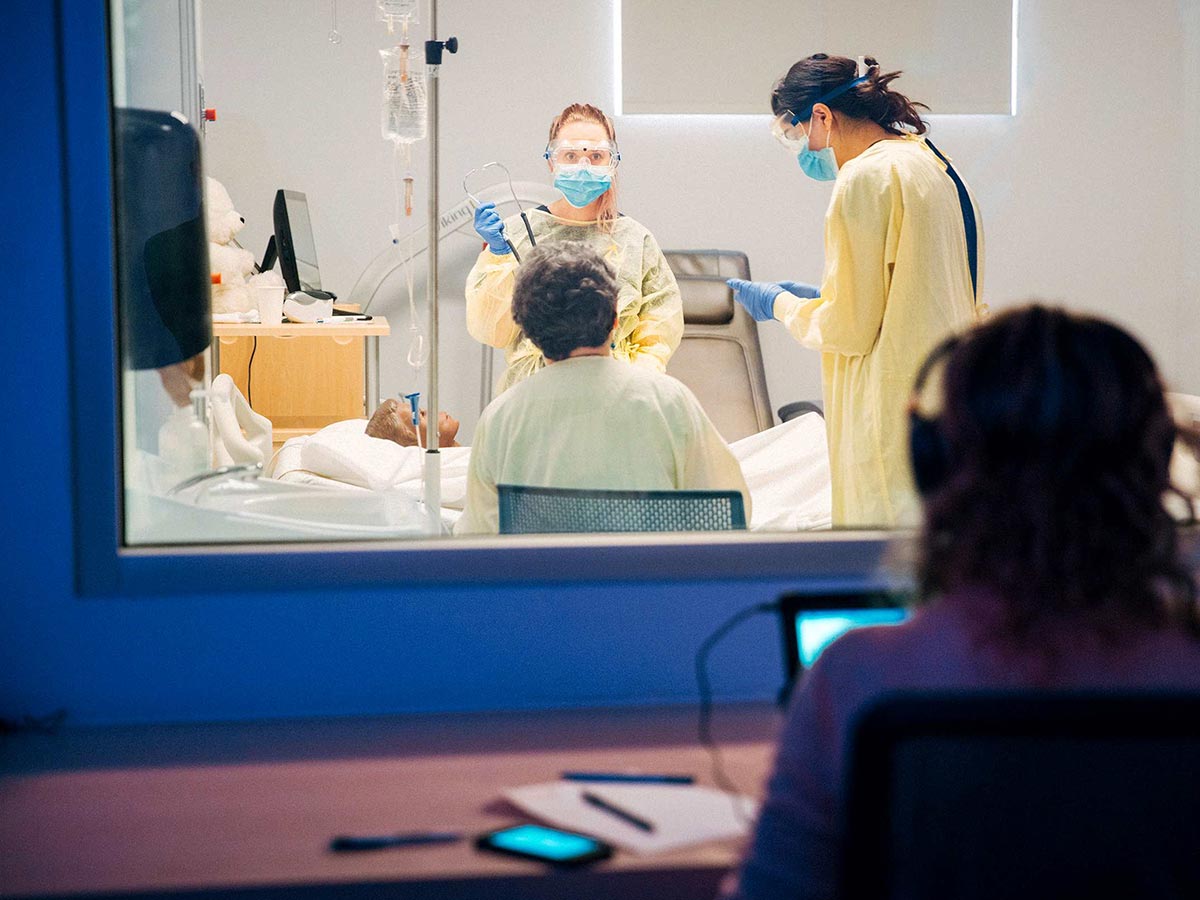Over $1 million from FDC Foundation promises to improve patient outcomes for Ontarians

Students work with high-tech mannequins that talk, move and respond to light. This helps improve patient care and confidence. Photo by Ryan Walker.
A gift of just over $1 million from the FDC Foundation to Toronto Metropolitan University’s Daphne Cockwell School of Nursing (DCSN) promises to improve patient outcomes for Ontarians. With generous support from the foundation, DCSN has increased capacity to incorporate more online and live-actor simulations, and acquired the best and most relevant patient simulation mannequins and debrief software systems — all of which will be part of the new state-of-the-art lab in the recently opened Daphne Cockwell Health Sciences Complex (DCHSC).
“Nurses do so much in Ontario’s — and Canada’s — healthcare system. They are responsible for a wide range of patient needs,” says Elisa Williams Schroen, manager of philanthropy at the FDC Foundation. She adds that, “programmable mannequins, online and live-actor simulations give student nurses the opportunity to gain familiarity with situations they will encounter in the field and prepare them for the experiences they have in the real world. This ultimately leads to improved outcomes for patients in the province which aligns directly with the founding purpose of the FDC Foundation.”
Nancy Walton, director of the school of nursing, is quick to acknowledge the impact that such a gift has for nursing students’ and preparing them to be practitioners. “We’re always looking for ways to incorporate more simulation into clinical learning,” she says. “This lab and this new equipment allows us to do it even better.”
Improved nursing simulation experiences
The high-tech simulation lab located on the fourth floor in the DCHSC, was built to replicate hospital wards with three large 15-bed wards and individual rooms, as well as supply and linen closets. Here, nursing students have access to clinical suites where they can practice interactions with patients, in-depth clinical examinations, and nursing-station equipment set up to simulate real-life conditions and hospital scenarios. In addition to replicating a real hospital setting, the new simulation suites can be adapted to mimic several different settings, like out in the community or in the home.
“The sky is the limit,” says Walton, “you can arrange the suites to replicate any of the possible environments where nurses are providing care.” Lab technicians operate patient simulation mannequins and debrief software systems from control rooms attached to the suites. “The mannequins can talk and respond. If you shine a light in their eye, for example, they can be made to turn their head.” Scenarios are videotaped and students can debrief after the simulation activities.
Live actor simulations have also become more real in the lab’s new setting. These simulations give students exposure to experiences like potential abuse and suicidality in a safe space.
“Live actor simulations are very compelling for students. They become so engaged that they can forget they are working with actors,” Walton notes. Experiences like this are valuable for students to build confidence and coping strategies to face challenging and unpredictable situations in future work environments.
Multi-perspective gamification
The DCSN, widely known for their award-winning virtual gaming simulations, will use part of the FDC Foundation gift to develop more gamification tools. Walton hopes the school and programs can offer both students and other users multi-perspective scenarios with future games, giving them the ability to see a clinical situation from the view of a nurse, a patient, caregivers and all involved.
DCSN’s virtual gaming simulations are open access. With the larger capacity for simulation thanks to the FDC Foundation, Walton notes that there are plans for it to be further incorporated into curriculums for both the collaborative and post-diploma nursing programs over the coming years.
“There is no end to the complexity of humans,” says Walton. “Virtual gaming allows us to build in the complexity that nurses experience, in a way that students can take in piece by piece. This gives them the chance to apply it to their real-life experience in the professional world.”
A version of this story by Jessica Leach appeared in Toronto Metropolitan University Today on December 18, 2019.